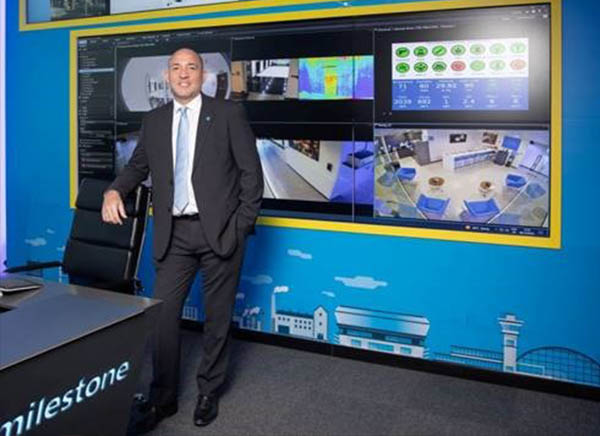
The annual International Exhibition for Security, Emergency services, Safety, Policing, and Cybersecurity, Intersec 2023, hosted businesses from all over the world to present their solutions. The global market is constantly looking for new and innovative tech-driven solutions to emerging data challenges in their region.
Milestone Systems, the open-platform video management software solution provider in the Middle East, was among the top exhibitors at this year’s exhibition. As part of its showcase, Milestone Systems highlighted its latest innovations in leveraging data-driven video technology solutions, explaining how this benefits end-consumers in the security sector and beyond.
Milestone Systems continues to be at the forefront of assisting businesses and society in establishing a safer, more effective environment utilising cutting-edge technology, even while the local security market undergoes fast change. Milestone Systems and its collaborators presented research-based smart solutions at Intersec 2023 to address the region’s changing needs.
As the industry continues to experience growth, Milestone Systems has also revealed two key trends that will shape the Data-Driven Video Technology space:
Trend 1: Smart Workplaces & Cities
Smart city technologies like artificial intelligence, machine learning and predictive analysis will rise this year as UAE and Saudi Arabia is most likely to continue to invest heavily in smart city projects, such as Masdar City, Expo City Dubai and NEOM.
Technological innovations have extended the possibilities of what videos can do or how people and authoritative bodies, such as the government, can use them.
Paul Park, Regional Director at Milestone Systems said “With the UAE aiming to become more technologically efficient, introducing data-driven concepts to the region with the developments of Smart Cities, Smart Workplaces, adopting Sustainability goals and more, data-driven video technology will become more prominent.”
Future smart cities will use intelligent cameras for traffic control to reduce pollution, traffic, and accidents. Edge computing will also support a variety of augmented and virtual reality (AR and VR) applications, enabling holographic learning and AR purchasing for end users. These developments have the potential to dramatically improve urban sustainability, efficiency, and daily life.
Communities can use data-driven video technology to monitor various factors crucial to creating a thriving smart city or building. Data-driven video analytics for smart cities can help identify even the most basic information, such as monthly or yearly carbon emissions, with precise data that can help decision-makers identify which months produce the most carbon, why there is an increase or decrease in the emissions, how the emissions can be controlled or reduced, and what the city can do better.
Employers will be able to better analyse employee behaviour by using data-driven video technology and smart sensors in organisational settings to enable remote and in-person work. When employees are most engaged, what activities elicit this feeling, which workplace space increases productivity, and so forth. Business decision-makers may find this information useful in better understanding what they must do to increase their bottom line.
Trend 2: Digitising the Healthcare sector
The healthcare sector will see the exponential transformation of Data-driven video technology. This technology can help in making decisions as to when a patient requires urgent attention. It can also alert medical staff in the hospital whose patient is in distress to give prompt medical assistance and help in making the hospital environment better along with offering well-planned patient care regimes.
This technology will not only reshape the landscape of the healthcare industry but also potentially save thousands of lives.
Despite the many benefits of data-driven video technology, the industry must enact patient data and privacy protections and uphold them while using video technology. To adhere to the requirements and privacy concerns, healthcare facilities will need to create strict rules and restrictions on how data-driven video technology can and cannot be utilised.
The future will witness limitless possibilities as technological advancements continue to evolve.